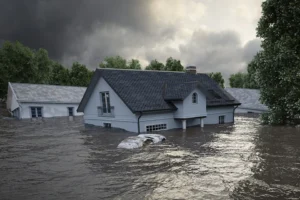Preparing your home for strong storms is essential to protect your family and property. Storms can cause significant damage if precautions are not taken. Understanding what needs to be done before a storm hits can make all the difference in minimizing potential damage.
One of the first steps in storm preparation is checking the structural integrity of your home. This includes inspecting and reinforcing your roof, securing doors and windows, and setting up an emergency supply kit. Additionally, making smart landscaping choices can help protect your property from storm damage. Taking these actions can give you peace of mind and ensure your home is as storm-ready as possible.
Inspecting and Reinforcing Your Roof
One of the first steps we take to prepare for strong storms is inspecting and reinforcing the roof. A sturdy roof can make a big difference when high winds and heavy rain hit. Start by checking for loose or missing shingles, as these can be weak points where water can seep in. Be sure to look around chimneys, vents, and skylights, as these areas are often prone to leaks. If you find any damage, repair it right away to prevent further issues.
Next, consider reinforcing your roof to withstand harsh weather. This might involve adding hurricane straps or clips to secure the roof trusses to the walls. These metal devices help keep your roof attached to your home during strong winds. You can also have a professional install a secondary water barrier underneath the shingles. This extra layer of protection can help stop water from entering your home if the shingles get damaged.
Securing Doors and Windows Against Strong Winds
When preparing for a storm, securing doors and windows is important to keep wind and water from getting into your home. Start by inspecting all exterior doors and windows for any cracks or gaps. Seal these areas with weatherstripping or caulk to prevent drafts and water leaks. Ensure that doors have at least three hinges and a deadbolt lock to make them more secure.
Windows are particularly vulnerable during storms. Consider installing storm shutters or plywood panels over windows to protect them from flying debris. If you live in an area prone to hurricanes, you might want to invest in impact-resistant windows. These windows can withstand high winds and can protect your home from severe damage. Taking these steps will help ensure your home is well-prepared to face strong storms, keeping you and your family safe.
Creating an Emergency Supply Kit
An emergency supply kit is essential to have ready before a storm hits. This kit should include all the necessary items you and your family will need to stay safe and comfortable if the power goes out or if you need to evacuate. Start by gathering basic supplies like water, non-perishable food, a flashlight, and extra batteries. Aim to have at least a three-day supply of water and food for each person in your household.
Your emergency kit should contain basic supplies, hygiene items such as hand sanitizer, wet wipes, and personal medications, as well as important documents like identification, insurance papers, and any necessary medical records. Lastly, consider adding a first-aid kit, a portable phone charger, and some cash in small bills. Having a well-stocked emergency kit can help you manage the situations that arise during and after a storm more effectively.
Landscaping Tips to Protect Against Storm Damage
Your yard and landscaping can play a significant role in protecting your home from storm damage. Start by trimming trees and bushes, as overgrown branches can break off and cause damage during high winds. Remove any dead or loose branches and consider getting professional help for larger trees that are close to your home. Keeping your trees well-maintained can reduce the risk of falling branches and other hazards.
Another useful tip is to secure outdoor furniture and other loose items in your yard. These can become dangerous projectiles in strong winds. You can store them inside or secure them with heavy-duty straps. Finally, check your yard’s drainage. Make sure gutters and downspouts direct water away from your home’s foundation. You might also consider creating a rain garden or installing a French drain to help manage excess water. These landscaping measures can help minimize storm damage to your property.
Conclusion
Preparing your home for storms involves more than just hoping for the best. By taking proactive steps like inspecting and reinforcing your roof, securing doors and windows, creating an emergency supply kit, and landscaping with storm safety in mind, you can greatly reduce the risk of significant damage to your property. These measures not only help protect your home but also provide peace of mind that you and your family are ready to face adverse weather conditions.
At Northwest Restoration, we understand the challenges of storm preparation and recovery. If you’ve taken these steps and still find yourself facing storm damage, don’t hesitate to reach out for professional help. We specialize in restoring properties affected by storms and can provide the expertise needed to get your home back to normal. Contact us today to ensure your property is secure and well-prepared for future storms.









